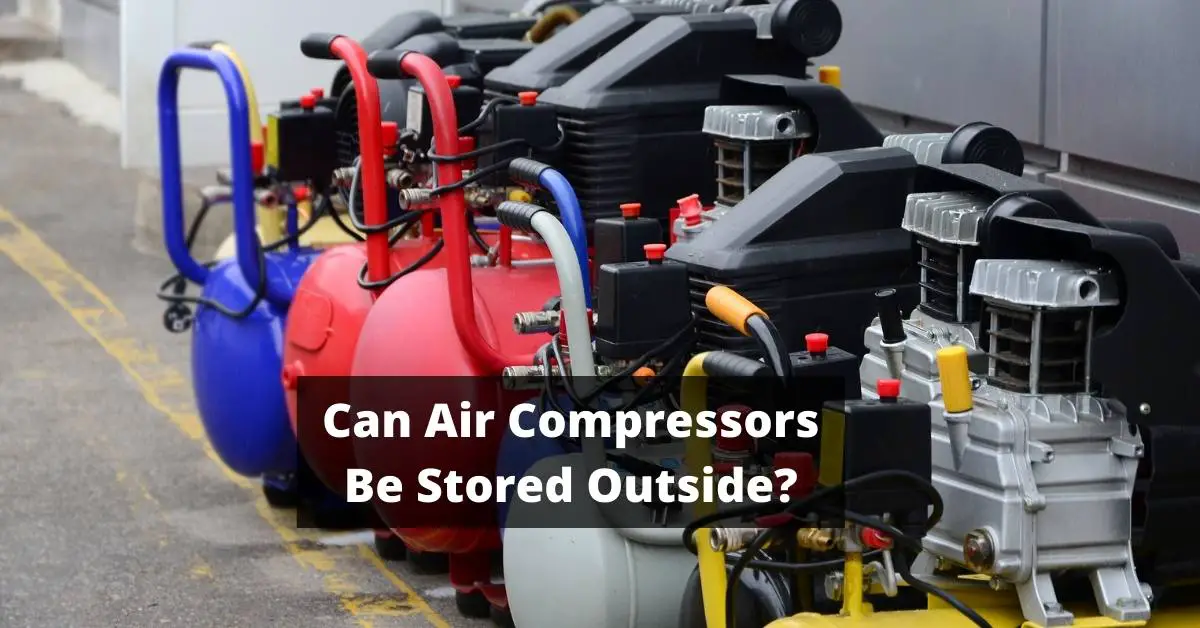As a homeowner and DIY enthusiast, I am always on the lookout for tools and equipment that can make my life easier. One tool that has been particularly useful in my projects is the reed valve air compressor. This machine may seem like just another piece of equipment to add to your collection, but it is so much more than that.
To me, a reed valve air compressor is like having a loyal and reliable friend by your side during every project. This type of compressor uses a unique mechanism to compress air, making it an ideal choice for those who need consistent pressure and reliability.
But what exactly is a reed valve air compressor? How does it work? And why should you consider using one for your own projects?
Let’s dive into these questions and more in this article about reed valve air compressors.
Definition and Overview of Reed Valve Air Compressors
You’re looking at a machine that uses thin strips of metal to suck in and push out air, making it perfect for inflating tires or powering tools. This is a reed valve air compressor, which is a type of positive displacement compressor that uses flexible strips (called reeds) to move air through the system.
These compressors are commonly used in small portable units and have a simple design that makes them reliable and easy to maintain. Reed valve compressors work by using the pressure difference between the two sides of each reed strip to open and close a valve.
When air enters the compressor, it passes through an intake port and flows into the space between two adjacent reeds. As this space expands, one of the reeds flexes outward, creating an opening that allows air to flow into the compression chamber. Once this chamber is filled with air, the reed snaps back into place due to its inherent elasticity, trapping the air inside.
As the piston moves upward in its cylinder, pressure builds up inside the compression chamber until it reaches a level high enough to overcome the force holding down one end of each reed strip. At this point, both ends lift off their seats simultaneously allowing compressed air to escape through an outlet port located on top of or near where they sit when closed.
The process repeats itself as long as there is demand for compressed air from whatever tool or application is being powered by this versatile machine!
How Reed Valve Air Compressors Work
Now let’s delve into how this type of compressor operates, and you’ll be amazed at the simplicity of its mechanics. Reed valve air compressors work by using a set of reed valves that are made up of thin metal strips.
These reeds act as one-way gates or flaps that allow air to flow in and out of the cylinder. When the piston moves down, it creates a vacuum in the cylinder, which pulls air through an intake valve and into the chamber.
As the piston moves up, it compresses the air inside the chamber. The compressed air then flows back out through another set of reed valves that prevent any backflow from occurring.
This process is repeated continuously as long as the motor is running, allowing for consistent airflow and pressure output. Reed valve air compressors have several advantages over other types of compressors, including their simplicity in design, low maintenance requirements, and high efficiency levels.
In addition, they tend to be quieter than other types of compressors since there are no mechanical parts rubbing against each other during operation. Overall, these types of compressors are excellent choices for those looking for an effective yet straightforward solution to their compressed air needs.
Advantages of Using Reed Valve Air Compressors
The simplicity, low maintenance requirements, and high efficiency levels make reed valve compressors an excellent choice for those in need of compressed air. Reed valves are incredibly durable and can withstand a lot of wear and tear without needing to be replaced. They also operate at high speeds, which allows them to produce a significant amount of compressed air quickly and efficiently.
Another advantage of using reed valve air compressors is their ability to work with a variety of different types of gases. This makes them ideal for applications that require the compression of oxygen or other hazardous gases that can’t be compressed using traditional piston-based compressors.
Reed valves are also very lightweight, making them easy to transport from one location to another. Lastly, reed valve air compressors have a relatively low cost compared to other types of compressors on the market. This makes them an attractive option for small businesses or individuals who need compressed air but don’t want to spend a lot of money on expensive equipment.
Overall, there are many advantages to using reed valve air compressors that make them an excellent choice for anyone in need of compressed air. These benefits notwithstanding, however, there are some limitations when it comes to the use of reed valve compressors that should be considered before making a purchase decision.
Limitations of Reed Valve Air Compressors
If you’re considering purchasing a reed valve air compressor, it’s important to be aware of its limitations and potential drawbacks. One limitation is that these compressors tend to have shorter lifespans compared to other types of air compressors because the reed valves in the compressor may become worn over time and require replacement.
Additionally, reed valve compressors are typically not suitable for high-pressure applications. Another drawback of using a reed valve air compressor is that they can be quite noisy during operation. This can be particularly problematic if you plan on using your compressor in an indoor environment where noise levels may be restricted.
In addition, the design of the reed valve compressor can make it difficult to maintain consistent pressure levels, which could potentially impact the quality of your work. Despite these limitations, there are still many benefits to using a reed valve air compressor, as discussed in our previous section.
It’s important to carefully consider your specific needs and requirements before investing in any type of air compressor so that you can choose the one that best fits your unique situation. Moving forward into our next section on applications of reed valve air compressors, we’ll explore some common uses for this type of compressor and how they might benefit different industries and individuals.
Applications of Reed Valve Air Compressors
I find reed valve air compressors to be incredibly versatile and useful for a variety of applications.
When it comes to airbrushing, they provide consistent airflow and pressure control, ensuring precise and professional results every time.
For pneumatic tools, the power and efficiency of a reed valve compressor can make even the toughest jobs a breeze.
And for home use, these compressors are great for tasks like inflating tires or powering small tools around the house.
Overall, I believe that the applications of reed valve air compressors are endless, making them an essential tool in any workshop or garage.
Airbrushing
You’ll love how effortless it feels to create stunning art with the smooth and even flow of air from a reed valve air compressor. Airbrushing is an excellent application for this type of compressor, as it requires a consistent flow of compressed air to produce precise lines and gradients.
With a reed valve air compressor, you can easily adjust the pressure to achieve the desired effect without worrying about fluctuations or interruptions in airflow. Airbrushing has become increasingly popular in recent years, especially among artists who enjoy creating detailed illustrations or portraits.
The fine control provided by an airbrush allows artists to layer colors and create intricate shading effects that are difficult to achieve with traditional paintbrushes. Whether you’re a seasoned professional or just starting with this technique, using a reed valve air compressor will give you the confidence and precision needed to produce stunning works of art.
And now, let’s move on to the next section where we’ll explore another fascinating application for pneumatic tools!
Pneumatic Tools
In this section, you’ll discover how pneumatic tools can revolutionize your work. They offer powerful and efficient performance, making tasks faster and easier than ever before. Pneumatic tools, also known as air-powered tools, use compressed air to operate. They are widely used in construction sites, automotive repair shops, and factories.
Pneumatic tools have many advantages over traditional electric or manual tools. They’re more powerful than their counterparts because they rely on compressed air instead of electricity or manual effort. This means that they can handle tougher materials and complete tasks faster. Additionally, pneumatic tools have a longer lifespan because they have fewer moving parts that wear out over time.
Lastly, they’re more efficient because they produce less heat during operation compared to electric or manual tools. This reduces the risk of overheating and damage. With all these benefits combined, it’s no surprise that pneumatic tools are becoming increasingly popular in various industries.
Moving onto the subsequent section about ‘home use’, you’ll find out how easy it is to incorporate pneumatic tools into your everyday life at home.
Home Use
Using pneumatic tools for home projects can make tasks faster and easier, providing powerful and efficient performance that’s becoming increasingly popular in various industries.
I’ve found that using a reed valve air compressor is an excellent option for powering these tools. This type of compressor uses a series of valves to control the flow of air into the compression chamber, allowing for continuous operation without overheating.
One of the benefits of using a reed valve air compressor for home use is its compact size and portability. Many models are designed to be lightweight and easy to move around, making them ideal for DIY projects that require mobility. Additionally, they tend to be relatively quiet compared to other types of compressors, which is important if you live in a shared space or don’t want to disturb your neighbors.
However, if a reed valve air compressor does not suit your needs, there are alternatives to consider. Exploring different options can help you find the best fit for your project requirements and budget.
Alternatives to Reed Valve Air Compressors
If you’re looking for different options to power your tools, there are a variety of other types of compressors available such as the rotary screw compressor. This type of compressor is often used in industrial settings for its consistent and efficient performance.
For example, a manufacturing company switched from using reed valve air compressors to rotary screw compressors and saw a significant decrease in downtime due to equipment malfunction.
Another alternative to reed valve air compressors is the reciprocating piston compressor. This type of compressor works by using pistons to compress the air, which is then sent through an outlet valve. While these types of compressors are commonly used in small-scale operations, they can also be found in larger industrial settings.
Finally, centrifugal air compressors offer another option for those looking to replace their reed valve air compressor. Centrifugal air compressors use high-speed rotating impellers to generate compressed air. These types of compressors are often used in large-scale industrial settings where a high volume of compressed air is required.
When choosing the right type of air compressor for your needs, it’s important to consider factors such as the amount and frequency of use, available space and power supply, and required pressure levels. By understanding your specific needs and researching different types of compressors available on the market today, you can make an informed decision that will help keep your tools running smoothly for years to come.
Choosing the Right Air Compressor for Your Needs
Find the perfect air compressor to power your tools and keep them running smoothly, ensuring you’re never left frustrated or stranded mid-project. Choosing the right air compressor can be a daunting task, but it’s essential to get the correct one for your needs.
There are many different types of air compressors available on the market, and each has its own unique features and benefits. Firstly, consider what type of tools you will be using with your air compressor. Different tools require different levels of pressure and airflow. For example, nail guns require low-pressure output while sandblasters require high-pressure output.
Secondly, think about how often you’ll be using your air compressor as well as where it will be used. If you’re going to use it frequently or in a harsh environment such as a construction site, then a more robust model may be required. Finally, consider the size of the tank that is needed for your project requirements. Smaller tanks are suitable for short bursts of compressed air while larger tanks provide longer periods of continuous airflow without needing to stop and refill frequently.
By taking into account these factors when choosing an air compressor, you’ll ensure that you get exactly what you need to complete any job efficiently. In conclusion, finding the right air compressor is crucial if you want to have reliable access to compressed air for your projects. Take some time to research which type is best suited for your specific needs before making any purchases so that you can avoid any unnecessary expenses down the road due to inadequate equipment performance or incorrect usage practices. With careful consideration and planning beforehand, choosing an appropriate unit should become an easy task rather than something overwhelming!
Conclusion
Well, that’s all about reed valve air compressors. They’re efficient and reliable machines that are perfect for a wide range of applications. Whether you need to power pneumatic tools or inflate tires, a reed valve air compressor is a great option.
However, it’s important to note that they do have their limitations. They may not be suitable for high-demand applications or where noise levels need to be kept low. It’s also crucial to choose the right type of air compressor for your specific needs.
In conclusion, if you’re in the market for an air compressor, consider a reed valve model. Just remember to weigh the pros and cons and choose wisely based on your requirements. With the right choice, you’ll have an invaluable tool at your disposal for years to come.



